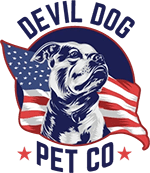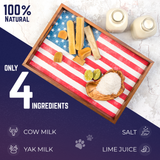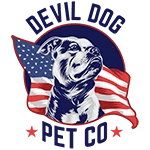Key Takeaways
- Paws dog food emphasizes transparency and quality through a direct-to-consumer model.
- Owners play a crucial role in making informed nutritional choices for their dogs.
- Understanding what differentiates Paws from supermarket brands is essential.
- Choosing the right Paws formula depends on matching it to your dog's specific needs.
Table of Contents
- What Is Paws Dog Food? Definition, Product Types, and What Sets It Apart
- Key Ingredients and Nutritional Profile, Why They Matter to Your Dog's Health
- How to Choose the Best Paws Dog Food Formula for Your Dog's Age, Size, and Needs
- Transitioning to Paws Dog Food, Methods, Timelines, and Troubleshooting
- Comparison: Paws Dog Food vs. Major Brands, How Does It Stack Up?
- Nutritional and Ingredient Analysis
- Storing and Preserving Paws Dog Food, Maximum Freshness Techniques
- Managing Dog Weight, Allergies, and Special Diets with Paws
Paws Dog Food, A No-Nonsense Guide for Owners Who Lead with Purpose
Every dog's nutrition starts with an owner who takes full responsibility for their choices. Paws dog food represents a direct-to-consumer approach that puts transparency and quality first, but choosing the right formula requires understanding exactly what sets it apart from supermarket brands and how to match it to your dog's specific needs. Shop all products to find the best fit for your dog's nutritional requirements.
This guide cuts through marketing fluff to deliver actionable intelligence on ingredients, transitions, comparisons with major brands, and real-world feeding strategies. Whether you're evaluating subscription services or troubleshooting digestive issues, you'll get veteran-tested guidance that prioritizes your dog's long-term health over convenience. For small breeds, explore options for dogs 5-25 lbs to ensure the right portion and formula for your pet.
What Is Paws Dog Food? Definition, Product Types, and What Sets It Apart
Brand Overview
Paws dog food operates as a subscription-based pet nutrition company focused on fresh, minimally processed recipes delivered directly to consumers. Founded on the principle that dogs deserve restaurant-quality ingredients, Paws formulates recipes with human-grade proteins, vegetables, and supplements, then flash-freezes meals to preserve nutritional integrity without artificial preservatives.
Product Formats and Varieties
Paws offers three primary formats: fresh frozen meals (averaging 400-500 calories per 12 oz serving), freeze-dried raw (reconstituted with water, 450 calories per cup), and baked kibble (380 calories per cup). Fresh meals require freezer storage and 24-hour thaw times, while freeze-dried and kibble options provide shelf-stable convenience for travel or backup feeding. For medium-sized dogs, check out products for dogs 20-45 lbs to match your dog's calorie and portion needs.
Top Three Unique Selling Points
- Batch transparency: Every shipment includes lot numbers traceable to specific ingredient sources
- Veterinary formulation: Recipes developed with board-certified veterinary nutritionists
- Customization algorithm: Portion sizes calculated based on dog's age, weight, activity level, and body condition
What Sets Paws Dog Food Apart
Unlike mass-market brands that rely on co-packers, Paws controls manufacturing in USDA-certified facilities, allowing real-time quality adjustments. Their "nose-to-tail" sourcing includes organ meats for natural vitamin content, while most competitors use synthetic vitamin premixes. Subscription flexibility allows pausing, swapping proteins, or adjusting delivery frequency without penalties, addressing the biggest frustration with traditional auto-ship programs.
Key Ingredients and Nutritional Profile, Why They Matter to Your Dog's Health

Ingredient Breakdown
Paws recipes feature single-source proteins as the first ingredient: USDA beef (28% crude protein), free-range chicken (26% crude protein), wild-caught salmon (24% crude protein), or grass-fed lamb (27% crude protein). Supporting ingredients include sweet potatoes for complex carbohydrates, spinach and carrots for beta-carotene, and blueberries providing 15mg of anthocyanins per serving for antioxidant support. For more on beef-based nutrition, see this in-depth look at beef dog food.
Grain-Free vs. Grain-Inclusive, Pros, Cons, and Scientific Evidence
Paws offers both grain-free formulations (substituting legumes and potatoes) and grain-inclusive recipes featuring brown rice and oats. Grain-free variants benefit dogs with confirmed grain allergies, while grain-inclusive options provide fiber for digestive health and may reduce DCM (dilated cardiomyopathy) risk associated with high-legume diets. The FDA's ongoing investigation into grain-free foods and heart disease makes grain-inclusive the safer default choice for most dogs.
Digestibility and Nutritional Value
Fresh paws dog food recipes achieve 85-90% digestibility compared to 75-80% for typical dry kibble, meaning dogs absorb more nutrients per serving. Omega-3 fatty acids from salmon oil provide 300mg EPA and 200mg DHA per cup, supporting skin health and cognitive function. Added probiotics (1 billion CFU Lactobacillus acidophilus) and prebiotics (chicory root) maintain gut microbiome balance. For more on the benefits of probiotics in dog diets, read about dog food with probiotics.
| Recipe Type | Protein % | Fat % | Fiber % | Omega-3 mg/cup |
|---|---|---|---|---|
| Fresh Beef | 28 | 12 | 3.5 | 500 |
| Fresh Chicken | 26 | 10 | 4 | 350 |
| Fresh Salmon | 24 | 14 | 3 | 800 |
How to Choose the Best Paws Dog Food Formula for Your Dog's Age, Size, and Needs
Life Stage Selection
Puppies (8 weeks to 12 months) require 22-28% protein to fuel rapid growth, with DHA for brain development and higher calorie density (around 350-450 calories per cup). Adult dogs (1-7 years) thrive on balanced maintenance formulas with 18-25% protein and moderate fat levels. Senior dogs (7+ years) benefit from easily digestible proteins, joint-supporting ingredients like glucosamine, and reduced calories to prevent weight gain as metabolism slows. For more targeted advice, see this guide to senior dog food.
Paws dog food addresses each life stage with targeted nutrition. Their puppy formulas deliver 26% protein with added DHA, while senior recipes include prebiotics for digestive health and omega fatty acids for coat shine.
Matching Size and Chewing Style
Small breeds (under 25 lbs) need calorie-dense kibble in smaller pieces to accommodate tiny mouths and faster metabolisms. Large breeds require controlled calcium levels during growth to prevent joint issues, plus larger kibble that encourages proper chewing. Giant breeds need carefully balanced nutrition to support steady, controlled growth over 18-24 months. For large and giant breeds, explore options for dogs 45-70 lbs and products for dogs 85+ lbs to ensure proper nutrition and kibble size.
Consider your dog's eating habits too. Gulpers benefit from larger kibble that forces slower consumption, while gentle chewers do fine with standard-sized pieces. Power chewers who demolish toys need the toughest formulas with maximum protein to satisfy their drive. For dogs who need a long-lasting chew, try antler dog chews for a satisfying and durable option.
Addressing Allergies and Food Sensitivities
Food allergies show up as itchy skin, ear infections, digestive upset, or excessive licking. The most common culprits are chicken, beef, dairy, wheat, and soy. Start an elimination diet by switching to a limited-ingredient formula with a novel protein your dog hasn't eaten before, like duck, venison, or fish.
Feed the elimination diet for 8-12 weeks minimum. If symptoms improve, you've found the trigger. Reintroduce suspected allergens one at a time, waiting two weeks between additions to pinpoint the exact problem ingredient.
Quick Selection Guide: Puppy under 6 months? High-protein growth formula. Adult dog with itchy skin? Limited-ingredient with novel protein. Senior over 8 years? Lower-calorie formula with joint support. Power chewer? Maximum protein density for satisfaction.
Transitioning to Paws Dog Food, Methods, Timelines, and Troubleshooting
The 7-Day Transition Schedule
Gradual transitions prevent digestive upset and food rejection. Start with 75% old food mixed with 25% paws dog food for days 1-2. Move to 50/50 on days 3-4, then 25% old food with 75% new food on days 5-6. Feed 100% Paws dog food starting day 7.
Measure precisely, if feeding 1 cup total, use ¼ cup Paws mixed with ¾ cup old brand during the first phase. Maintain regular feeding times and don't introduce other new foods, treats, or chews during the transition period. For safe feeding practices, review which human foods are toxic to dogs before offering table scraps or snacks.
Preventing and Solving Digestive Issues
Loose stools, decreased appetite, or mild stomach gurgling are normal during the first few days. Slow the transition if symptoms persist beyond 48 hours, extend each phase to 3-4 days instead of 2. Add a tablespoon of plain pumpkin or a probiotic supplement to support gut health.
Persistent vomiting, bloody stool, or complete food refusal for more than 24 hours requires veterinary attention. These aren't normal transition symptoms and may indicate an underlying health issue or severe food sensitivity.
When Dogs Refuse New Food
Picky eaters need extra motivation. Warm the food slightly to enhance aroma, mix in a small amount of low-sodium broth, or add a freeze-dried meat topper. Remove uneaten food after 20 minutes, don't leave it down all day or you'll reinforce grazing habits.
Skip treats between meals during the transition. A slightly hungry dog is more motivated to try new food. Most healthy dogs won't starve themselves, but consult your vet if refusal continues beyond 48 hours.
Comparison: Paws Dog Food vs. Major Brands, How Does It Stack Up?

Selection Criteria
We evaluated protein quality, ingredient transparency, price per pound, recall history, and customer satisfaction across four major brands. Each brand offers multiple formulas, so we compared their flagship adult maintenance recipes for consistency.
| Brand | Protein % | First Ingredient | Price/lb | Recalls (5 years) | Best For |
|---|---|---|---|---|---|
| Paws Dog Food | 24% | Deboned Chicken | $3.20 | 0 | Premium nutrition seekers |
| Purina ONE | 26% | Chicken | $1.85 | 1 | Budget-conscious owners |
| Pedigree | 21% | Ground Yellow Corn | $1.20 | 1 | Value shoppers |
| Whole Paws | 25% | Salmon | $2.95 | 0 | Ingredient-focused buyers |
Nutritional and Ingredient Analysis
| Brand | Protein % | First Ingredient | Grain-Free Options | Price per lb | Recall History (5 years) |
|---|---|---|---|---|---|
| Paws Dog Food | 24-28% | Deboned Chicken | Yes | $3.20 | 0 |
| Purina One | 26% | Chicken | Limited | $1.85 | 2 |
| Pedigree | 21% | Ground Whole Grain Corn | No | $1.40 | 1 |
| Whole Paws | 25% | Salmon | Yes | $2.95 | 0 |
Paws dog food delivers premium protein levels with whole meat as the first ingredient across all formulas. Their commitment to quality sourcing shows in the complete absence of recalls over five years, matching only Whole Paws in this critical safety metric.
Formula Types and Specialty Options
Paws offers 12 distinct formulas covering puppy, adult, senior, and therapeutic needs. Their limited-ingredient lines feature single novel proteins like venison and duck for allergy management. Purina One provides 8 formulas focused on mainstream needs, while Pedigree offers basic life-stage options without specialized therapeutic formulas.
Whole Paws matches Paws in variety with 11 formulas, including freeze-dried raw options. However, their distribution remains limited to Amazon, while paws dog food provides direct-to-consumer delivery nationwide plus retail availability.
Distribution and Service Models
Paws operates a subscription model with flexible delivery schedules, automatic adjustments based on consumption patterns, and free shipping on orders over $35. Customers can pause, modify, or cancel subscriptions through an intuitive online portal.
Traditional brands rely heavily on retail distribution. Purina One and Pedigree offer wide retail availability but limited direct-to-consumer options. This means no subscription convenience and potential stock-outs during supply chain disruptions. For a broader perspective on canine nutrition, consult the AVMA's dog nutrition tips.
Storing and Preserving Paws Dog Food, Maximum Freshness Techniques
Dry Kibble Storage
Store opened bags in airtight containers made of food-grade plastic or metal. Glass works too but risks breakage. Keep containers in cool, dry locations away from direct sunlight, heat degrades vitamins and fats. Properly stored dry paws dog food maintains nutritional value for 6 weeks after opening.
Never mix old kibble with fresh bags. Empty and clean containers completely before refilling to prevent rancid oils from contaminating new food. Use the "first in, first out" principle if storing multiple bags.
Wet and Fresh Food Handling
Refrigerate opened cans within 2 hours and use within 3-5 days. Cover tightly with plastic wrap or transfer to glass containers. Fresh frozen meals from Paws thaw safely in the refrigerator overnight, never use microwave or hot water thawing, which creates hot spots and destroys nutrients.
Portion frozen meals before thawing if your dog won't finish a full serving. Thawed fresh food cannot be refrozen safely and must be used within 48 hours.
Preventing Spoilage and Contamination
Check kibble monthly for mold, unusual odors, or insect activity. Discard immediately if you spot white or green fuzzy growth, rancid smells, or pest evidence. Clean storage containers with hot soapy water and dry completely every 4-6 weeks.
Humidity is kibble's enemy, use moisture-absorbing packets in storage containers if you live in humid climates. Keep bags sealed tightly and avoid storing in basements, garages, or other areas prone to temperature fluctuations. For additional information on food safety and storage, see the FDA's guide on your dog's food health and safety.
Storage Lifespan Guide: Unopened dry food: 12-18 months. Opened dry food: 6 weeks. Unopened canned: 2-3 years. Opened canned (refrigerated): 3-5 days. Fresh frozen: 6 months frozen, 48 hours thawed.
Managing Dog Weight, Allergies, and Special Diets with Paws

Weight Management Protocol
Calculate daily calorie needs using this formula: (Dog's weight in lbs × 30) + 70 = baseline calories for sedentary dogs. Active dogs need 1.5-2x this amount. For weight loss, reduce daily calories by 10-15% and weigh weekly. Healthy weight loss targets 1-2% of body weight per week. For dogs that need a satisfying treat during weight management, consider Himalayan dog yak chews as a long-lasting, protein-rich option.
Frequently Asked Questions
What are the main differences between Paws dog food and typical supermarket dog food brands?
Paws dog food focuses on fresh, minimally processed recipes made with human-grade proteins and vegetables, delivered directly to consumers via subscription. Unlike typical supermarket brands, Paws avoids artificial preservatives and fillers, using flash-freezing or freeze-drying to preserve nutritional integrity and freshness.
How do I choose the best Paws dog food formula based on my dog's age, size, and health needs?
Select a Paws formula that matches your dog's life stage, size, and specific health requirements by reviewing calorie content and ingredient profiles. Smaller breeds benefit from portion-controlled options, while puppies, adults, and seniors need formulas tailored to their developmental and energy needs.
What is the recommended process for transitioning my dog to Paws dog food to avoid digestive issues?
Transition gradually over 7–10 days by mixing increasing amounts of Paws dog food with your dog's current diet. Monitor for any digestive changes and adjust the pace as needed to ensure a smooth adjustment without upset stomach or diarrhea.
How does Paws ensure the quality and transparency of their ingredients and manufacturing process?
Paws sources human-grade ingredients and uses flash-freezing or freeze-drying to lock in nutrients without artificial preservatives. Their direct-to-consumer model offers full transparency on ingredient sourcing and production, empowering owners to make informed nutritional choices for their dogs.






